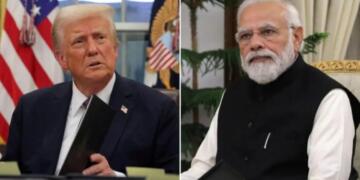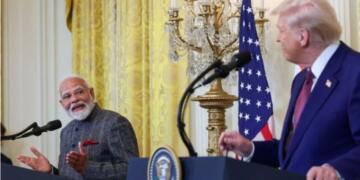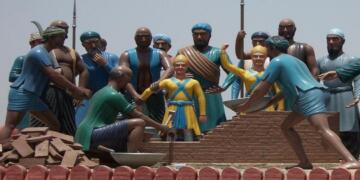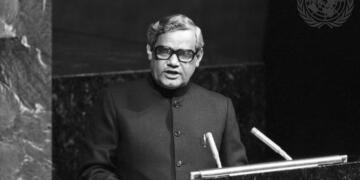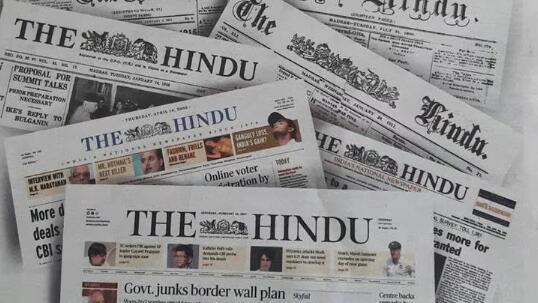There was a time when The Hindu stood as a pillar of serious journalism in India, a paper that wielded restraint, fact, and analysis like a scalpel. Today, that legacy is in tatters. What remains is not a responsible media house but a dangerous caricature of its former self, a publication that appears more invested in undermining India’s sovereignty than in upholding journalistic integrity. The most glaring example of this decline came on May 13, 2025, when The Hindu published an article featuring an Indian map that completely erased the state of Sikkim. Not misplaced. Not misrepresented. Erased. An entire Indian state vanished from the visual representation of our nation and The Hindu didn’t offer even the courtesy of an apology. It simply deleted the image from the web and moved on, hoping the nation’s short attention span would bury its culpability.
This wasn’t just a cartographic error; it was an assault on national dignity. The timing was no accident, the blunder occurred just days before Sikkim was to commemorate 50 years of its integration into the Indian Union. While the rest of the country was preparing to honour this proud moment, The Hindu delivered a cruel slap in the face to the people of Sikkim, reducing their existence to a footnote not even worth correcting publicly. The Chief Minister, Prem Singh Tamang, condemned the act, calling it deeply insulting. But The Hindu, in its typically arrogant silence, decided the issue was not worth its time, as though the erasure of an Indian state was beneath its intellectual dignity to acknowledge.
This is not a one-off incident. The Hindu has been on a consistent trajectory and it’s not upward. This is a paper that has slowly, methodically, and perhaps deliberately abandoned the tenets of national interest in favour of ideological subversion. In tone, language, and choice of coverage, The Hindu is becoming increasingly indistinguishable from The Global Times, the Chinese Communist Party’s notorious propaganda arm. Both publications claim to champion journalistic freedom, but both function as echo chambers of elite-approved disinformation. The Hindu, like The Global Times, has evolved from news reporting to narrative engineering with India as the primary target of its distortions.
Take the paper’s description of Jammu & Kashmir. The Hindu frequently refers to the region using the term “India-controlled Kashmir”, a phrase that mirrors Pakistani and Chinese terminology. This is not journalism; it’s diplomatic subterfuge. No credible Indian publication should be parroting language that originates in Islamabad’s ISPR war rooms or Beijing’s expansionist playbooks. But The Hindu does again and again thereby lending legitimacy to narratives that challenge India’s territorial integrity. Its word choices are not neutral. They are charged, calculated, and poisonous.
This rot in editorial values isn’t just semantic it’s operational. Earlier this month, The Hindu published a fabricated story claiming that three Indian fighter jets had crashed in Jammu & Kashmir. The photographs they used were not of wreckage, but of discarded fuel tanks. It was an outrageous lie that sparked panic, discredited the Indian Air Force, and gave fodder to hostile foreign media. Was it an honest mistake? Doubtful. It is hard to believe that a national newspaper with access to defense journalists could make such a basic misidentification. It reeks of something worse a reckless willingness to damage the morale of the armed forces in the pursuit of ideological or political goals.
And the list of transgressions is long. During the Rafale controversy, The Hindu played judge, jury, and executioner in a case that had no legal standing and zero factual basis. It weaponized selectively leaked documents to conjure a scandal where none existed. When the Supreme Court dismissed all allegations, The Hindu quietly moved on — no retraction, no introspection, no apology. The damage to public confidence and national defense preparedness was already done. It was not journalism; it was an ambush dressed in editorials.
There’s a pattern here that mirrors The Global Times with chilling precision. Both publications speak the language of liberalism but act in the service of authoritarian worldviews. The Hindu, like its Chinese counterpart, consistently undermines its own democratic nation while remaining curiously silent on the excesses of authoritarian regimes abroad. Human rights violations in Xinjiang? Silence. Crackdowns in Hong Kong? Silence. Suppression of free speech in China? Silence. But the moment a democratic institution in India moves to defend its laws or protect its borders, The Hindu transforms into a crusader for civil liberties conveniently aligning itself with China’s diplomatic talking points.
And it gets worse. The Hindu is selectively outraged. In BJP-ruled states, even minor incidents trigger a frenzy of op-eds, editorials, and panel discussions. But when journalists are beaten, opposition is crushed, or court orders are defied in non-BJP states like Tamil Nadu or West Bengal, The Hindu suddenly finds its throat choked. Where was The Hindu when the DMK government jailed journalists in Tamil Nadu for exposing corruption? Where was it when the West Bengal police harassed reporters and denied them legal access? Apparently, press freedom matters only when it fits a certain political narrative.
This hypocrisy would be laughable if it weren’t so dangerous. The Indian public must ask: what kind of newspaper selectively attacks its own government while giving foreign adversaries and domestic authoritarian regimes a free pass? What kind of journalist calls Indian territory “India-controlled” and deletes Indian states from maps? What kind of editorial board publishes fabricated stories about military crashes during times of geopolitical tension?
The answer is simple, a newspaper that has ceased to be Indian in spirit, even if it still operates within Indian borders. The Hindu is no longer a watchdog of democracy. It has become a lapdog of foreign interests, its tail wagging at every opportunity to defame, demoralize, and delegitimize the Indian nation. It is hard to shake the feeling that this paper is no longer speaking to its Indian readers but to foreign embassies, to global NGOs, and perhaps even to Beijing.
In fact, the resemblance between The Hindu and The Global Times is now so stark that it’s impossible to ignore. Both papers distort facts, twist language, suppress inconvenient truths, and amplify anti-national sentiments under the pretense of journalism. Both wear the garb of intellectual superiority while engaging in the lowest form of ideological warfare. And both have now crossed over from being biased to being complicit complicit in a campaign to weaken nations from within.
If The Global Times is China’s international propaganda arm, The Hindu is beginning to look like its Indian equivalent a domestic propaganda tool that packages its betrayal in the language of progressive dissent. But dissent is not sabotage. Critique is not capitulation. Journalism is not just the right to speak truth to power — it is also the responsibility to protect truth from enemies. And on that count, The Hindu has failed spectacularly.
So the question is no longer: Is The Hindu biased? The question is: Who is The Hindu working for? Because it certainly doesn’t seem to be working for the truth. Or for India. With its erasure of Sikkim, its “India-controlled Kashmir” framing, its fake military reports, and its selective silence on authoritarian allies The Hindu has proven one thing beyond doubt: it is acting as a mirror image of The Global Times. And whether by ideological delusion or by darker compulsions, The Hindu appears all too eager to make its Chinese masters happy, one headline, one false map, one anti-India editorial at a time.



